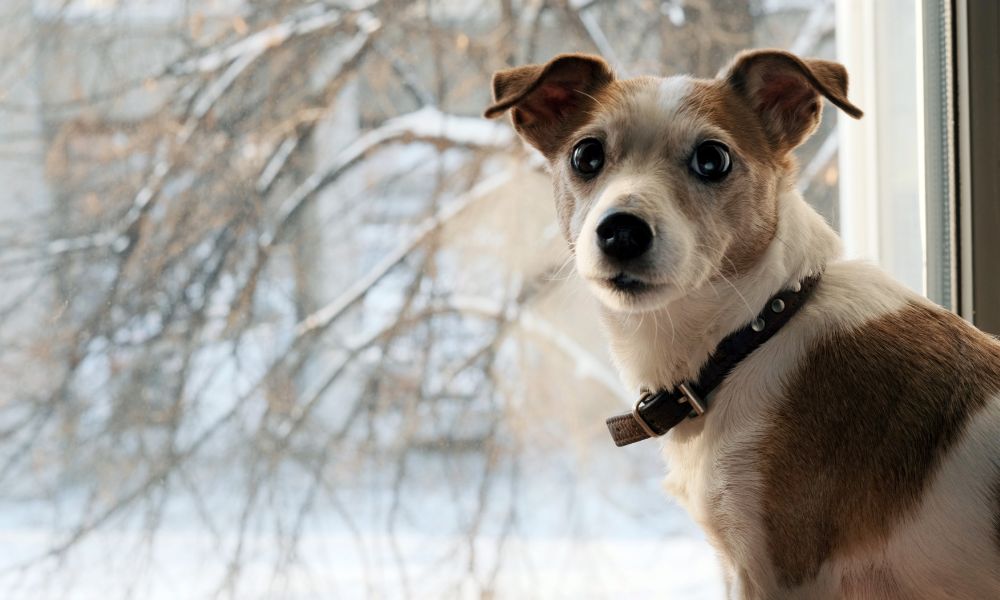Dogs, cats, and other companion animals deserve to live indoors where it is safe, warm, and they can be a part of the family. This is even more important in freezing temperatures and dangerous weather.
Read on to learn how you can keep animals in your care safe in the cold.
Caring for Dogs in the Cold
Temperatures below 32 degrees can quickly become dangerous for the average dog. Frostbite takes as little as 15 minutes to occur in dogs. As a general safety reminder, don’t leave dogs in cold cars, chained outside, or unsupervised outdoors.
Alaskan Malamutes, huskies, and some other giant dogs with dense coats have a reputation for enjoying playing in the snow. Like all dogs, their time outdoors should still be limited for their own safety.
If you notice your dog acting sluggish, confused, or shivering a great deal, bring your animal indoors and call your vet. If you notice blistered, red, or swollen skin, or if your dog’s skin still hasn’t warmed after coming indoors, you should also call your vet.
If you are taking a dog for a walk in cold weather, try to limit the walk to 10 minutes if the temperature is approaching freezing or if your dog is small or has a short coat. Warm jackets can help protect smaller dogs when they go on short walks in windy, damp, or cold weather.
It’s also a good idea to outfit your dog in waterproof booties before taking them on short walks in snow. If you can’t do that, be sure to clean your dog’s paws and dry them thoroughly after walks. This keeps them safe from anti-freeze, salt, or chemicals and gives you a chance to check for irritation, blisters, or red spots.
Finally, your dog’s age or medical history can also affect your dog’s tolerance for cold. It’s always a good idea to talk with your vet about what’s safe for your particular animal companion.
Cats Should Stay Indoors
Like dogs, cats left outdoors in cold weather can become ill or die from freezing temperatures. Cats deserve to live indoors at all times.
Additionally, a cat who is outdoors in freezing temperatures and searching for drinkable water could easily be poisoned by antifreeze — which can be deadly for cats even in very small doses. If you suspect your cat has been exposed to antifreeze, salt, or other chemicals used for melting ice or is ill from being out in the cold, call your vet immediately.
If there are unhoused cats in your community that you can’t bring indoors, you can help by providing a small straw shelter and extra heated food and heated water.
If your cat slips outdoors during freezing temperatures, keep an eye out for frostbite symptoms. Frostbite can develop in ears and other sensitive extremities when it is 32 degrees Fahrenheit or lower.
Ducks, Chickens, and Other Birds in Winter
Although some breeds may be more resilient to cold than others, all chickens and ducks can be at risk of frostbite when temperatures fall to 32 degrees Fahrenheit. Birds who are not accustomed to cold temperatures can also be at risk, even if their breed is supposedly resilient to cold temperatures. Resilience also does not mean comfortable.
Make sure your birds have a safely heated, winterized coop with plenty of insulation and heated water.
Horses and Other Farmed Animals
Horses are some of the few animal companions that don’t need to live indoors, but they still need shelter from the elements. To keep horses safe in cold weather, make sure you are providing increased food and heated water so their bodies can produce enough heat.
Donkeys are less tolerant of freezing temperatures than horses.
Although rabbits are sometimes called farmed animals, they should live indoors, as cold weather is extremely dangerous if they become at all damp.
All farmed animals need warm, dry shelter with weatherproof insulation, access to heated water, and extra food in winter. Mud and wet conditions can be dangerous in cold temperatures.
It’s also important to make sure you can access their shelter in extreme weather to provide water and food and to make sure they are OK.
Whichever species of animals you are the caregiver for, make a plan ahead of extreme weather. Check with your animals’ vet and make sure to have enough food, water, medicine, and other miscellaneous supplies on hand. You don’t want to be stranded in a snowstorm or power outage without the supplies your animals need.








